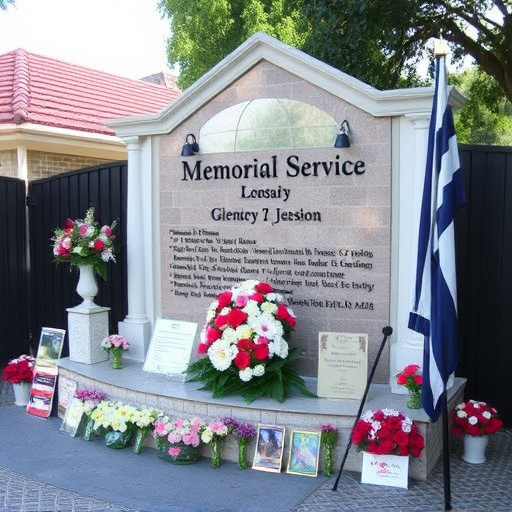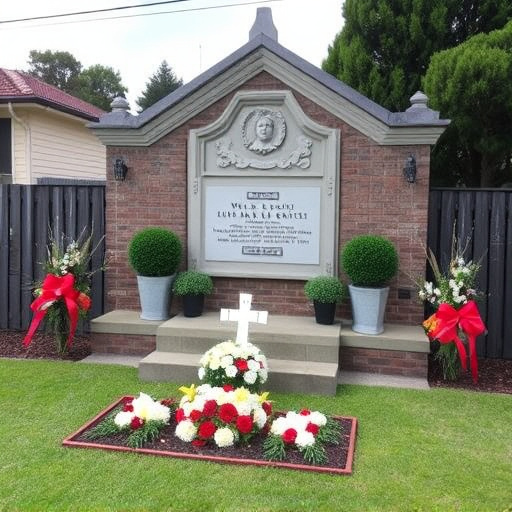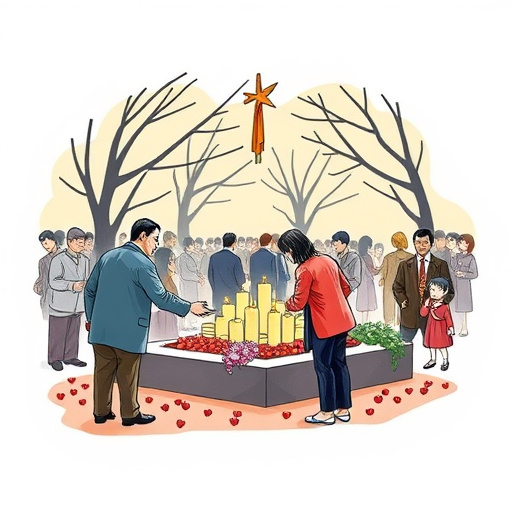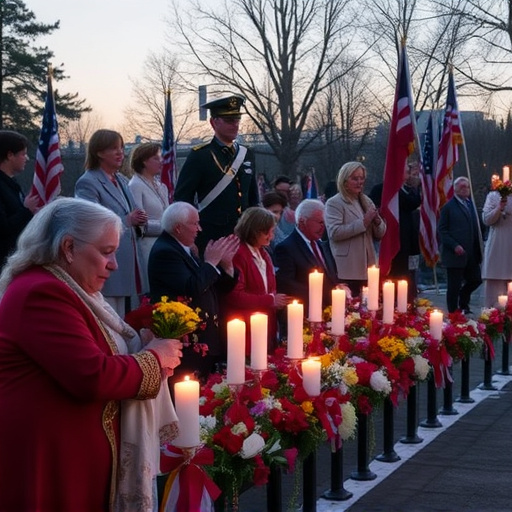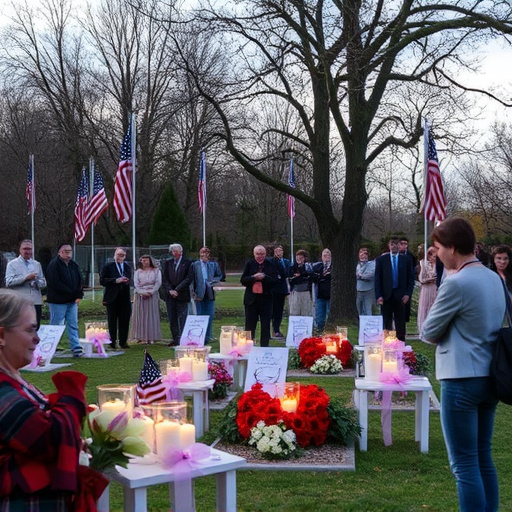Memorial Service Glenroy: A Comprehensive Exploration
Introduction
Welcome to an extensive exploration of Memorial Service Glenroy, a significant concept within the global memorialization industry. This article aims to delve into every facet of this practice, offering valuable insights for professionals, researchers, and individuals interested in understanding how communities honor and remember their loved ones. From its historical roots to modern adaptations, Memorial Service Glenroy plays a pivotal role in shaping societal rituals of remembrance.
Understanding Memorial Service Glenroy
Definition
Memorial Service Glenroy refers to the organized and ceremonial process of commemorating deceased individuals through a series of planned activities, typically involving family, friends, and the broader community. It involves creating a tribute that celebrates the life of the departed while offering support and comfort to those left behind. The term ‘Glenroy’ here symbolizes a harmonious blend of cultural traditions and modern practices, reflecting the diverse nature of memorial services worldwide.
Core Components
- Rituals and Ceremonies: These are the heart of Memorial Service Glenroy, including funerals, memorial ceremonies, wake services, or any other formal gatherings. Rituals can vary greatly depending on cultural, religious, or personal preferences.
- Memorialization Objects: Items such as headstones, monuments, or personalized plaques serve as lasting reminders of the deceased. These objects often carry symbolic meanings and are chosen to reflect the individual’s life.
- Support Services: Many memorial services include grief counseling, support groups, or community outreach programs aimed at helping individuals cope with their loss.
- Cultural and Personalization: Memorial Service Glenroy is deeply influenced by cultural traditions, with some communities having unique rituals and practices. Personalization is also a key aspect, allowing families to tailor the service to their loved one’s life.
Historical Context
The practice of memorial services has ancient origins, dating back to pre-historical times when early societies would gather to honor the dead. Over centuries, these rituals evolved, incorporating religious beliefs, cultural customs, and societal norms. In many cultures, memorial services became a way to foster community bonds and ensure the passage of historical knowledge through generations. The modern concept of Memorial Service Glenroy, however, emerged during the 20th century with increased urbanization and globalization, leading to a more standardized yet personalized approach to honoring the dead.
Global Impact and Trends
International Influence
Memorial Service Glenroy has left an indelible mark on global culture, with its practices adopted and adapted across diverse nations. The universal need for memorialization ensures that this concept transcends geographical boundaries. For instance, while traditional funeral rites in Africa may involve elaborate dances and song, the core elements of remembrance and community support remain consistent. Similarly, Asian cultures often emphasize the role of family during memorial services, focusing on honoring ancestral spirits.
Regional Trends
- North America: In the United States and Canada, there is a growing trend towards personalized memorial services, incorporating unique themes and activities that reflect the deceased’s passions. Eco-friendly burials and cremations are also gaining popularity, driven by environmental concerns.
- Europe: European countries showcase a diverse range of traditions, from traditional funeral processions in Italy to more contemporary, minimalist approaches in Scandinavia. The rise of digital memorials and virtual services has been accelerated by the COVID-19 pandemic.
- Asia: Memorial services in Asia often involve elaborate ceremonies and offerings to ancestral spirits. There is also a notable trend towards memorial tourism, where individuals travel to significant sites or countries associated with their loved ones’ lives.
- Middle East and Africa: These regions often have vibrant, community-driven memorial practices, with large gatherings and celebrations of life that can last for several days.
Economic Considerations
Market Dynamics
The global memorial service industry is a significant economic sector, generating substantial revenue annually. According to a 2022 report by ResearchAndMarkets.com, the global funeral home services market size was valued at USD 157.3 billion in 2021 and is projected to grow at a CAGR of 4.9% from 2022 to 2030. This growth can be attributed to factors such as increasing life expectancy, rising disposable incomes, and urbanization.
Investment Patterns
Memorial Service Glenroy attracts substantial investments in various forms:
- Funeral Homes: These businesses provide a range of services, from traditional burials to cremations, and often offer memorialization products and pre-need planning options.
- Crematoriums: With the rise of cremations, investment in modern, efficient crematorium facilities has increased globally.
- Memorial Parks and Cemeteries: These sites require significant capital for land acquisition, infrastructure development, and maintenance.
- Memorialization Products: The market for headstones, monuments, and personalized memorial keepsakes is robust and continuously evolving.
Economic Impact
- Job Creation: Memorial service providers offer employment opportunities in various roles, including funeral directors, embalmers, caterers, and administrative staff.
- Community Revenue: Memorial services contribute to local economies by generating revenue for businesses involved in catering, floral arrangements, photography, and transportation.
- Tourism Boost: In some regions, memorial tourism attracts visitors who seek to honor their ancestors or explore cultural traditions related to death and remembrance.
Technological Advancements
Digital Memorialization
One of the most significant technological trends in Memorial Service Glenroy is the rise of digital memorials. Websites and online platforms now allow individuals to create virtual tributes, share memories, and connect with others who knew the deceased. These digital spaces offer a way to preserve and celebrate lives, especially for those who have left no physical remains or whose families live far apart.
Virtual and Augmented Reality (VR/AR)
VR and AR technologies are being utilized to create immersive memorial experiences. For instance, some companies develop VR environments where users can virtually visit significant locations in the deceased’s life, offering a unique way to commemorate and connect with memories.
- Example: A startup, Eternal Memorials, has developed a VR app that allows users to create interactive 3D models of their loved ones’ homes or favorite places, providing an immersive memorial experience.
Online Funeral Services
The COVID-19 pandemic accelerated the adoption of online funeral services, with live streaming allowing remote participation in ceremonies. This trend continues to grow, offering cost-effective and accessible options for families worldwide.
Policy and Regulation
Legal Frameworks
Memorial Service Glenroy is subject to various legal frameworks that differ across jurisdictions:
- Permits and Licensing: Most countries require funeral directors and memorial service providers to obtain licenses and permits to operate legally.
- Cremation and Burial Laws: These laws dictate the regulations surrounding cremation, burial practices, and disposal of remains. They often specify the minimum standards for facilities and services.
- Consumer Protection: Many regions have implemented consumer protection laws to ensure fair pricing, transparency in service offerings, and ethical business practices within the memorial industry.
- Cultural and Religious Guidelines: Some cultures or religions have specific guidelines governing memorialization practices, which must be respected by legal frameworks.
Influence on Development
Policies and regulations play a crucial role in shaping the industry:
- Standardization: Many countries establish minimum standards for service quality, ensuring a level of professionalism and care within the memorial sector.
- Consumer Rights: Legal protections empower individuals to make informed choices and provide recourse if they encounter unethical practices.
- Cultural Preservation: Regulations can help preserve cultural traditions while also allowing for innovation and adaptation in memorial services.
Challenges and Criticisms
Common Issues
- Cost: Memorial services, especially traditional burials with elaborate ceremonies, can be expensive, making them inaccessible to some families.
- Commercialization: Some critics argue that the industry is overly commercialized, with businesses prioritizing profit over providing genuine support to grieving individuals.
- Cultural Appropriation: As memorial practices become globalized, there is a risk of cultural appropriation, where traditions from one culture are used without understanding or respect for their significance.
- Environmental Impact: The environmental footprint of certain memorialization practices, such as traditional burials with metal caskets and concrete monuments, has raised concerns among eco-conscious individuals.
Strategies for Overcoming Issues
- Cost Transparency: Implementing transparent pricing policies and offering a range of service packages can help families make informed choices based on their budgets.
- Community Engagement: Encouraging community ownership of memorial services can foster support and understanding, potentially reducing commercial pressures.
- Cultural Sensitivity Training: Providing training to funeral directors and memorial planners can ensure cultural traditions are respected and understood, minimizing appropriation.
- Eco-Friendly Options: Promoting environmentally conscious memorialization practices, such as natural burials and biodegradable materials, offers sustainable alternatives.
Case Studies
Successful Applications
Case Study 1: Sustainable Memorial Park in Sweden
In Stockholm, Sweden, a new memorial park was developed with a focus on sustainability and community engagement. The park features natural burial grounds, wildflower meadows, and native tree plantations. Families are involved in the planting process, creating a unique connection to their loved ones’ resting places. This approach has been well-received, attracting visitors who appreciate the peaceful atmosphere and eco-friendly practices.
Case Study 2: Digital Memorial Community in India
A startup in Mumbai launched an online platform called ‘EternityMemorials’ that allows users to create digital memorials for their loved ones. The platform includes interactive features such as photo galleries, video messages, and shared memories. This case study demonstrates the power of technology in connecting communities across geographical boundaries and preserving digital legacies.
Case Study 3: Community-Driven Funeral Processions in Ghana
In Accra, Ghana, a unique funeral tradition involves large-scale community processions where friends and family walk alongside the deceased’s body to the burial site. This practice has been upheld through generations, fostering strong community bonds and providing support during times of grief. The city’s diverse cultural makeup adds to the richness of this memorialization ritual.
Future Prospects
Growth Areas
- Personalized Memorials: With evolving technology and increasing disposable incomes, there will be a continued demand for customized memorialization options, including personalized headstones, digital tributes, and unique themes reflecting the deceased’s passions.
- Eco-Friendly Practices: The growing environmental consciousness will drive the adoption of sustainable memorialization practices, such as natural burials, green cemeteries, and biodegradable materials.
- Virtual Memorials: As technology advances, virtual memorials and augmented reality experiences will become more immersive and accessible, allowing for global participation in remembrance rituals.
Emerging Trends
- Memorial Tourism 2.0: The concept of memorial tourism is expected to evolve, with individuals seeking unique, culturally rich experiences related to their ancestors’ lives. This could include immersive storytelling events or virtual reality visits to historical sites associated with the deceased.
- Gen Z Memorialization: Generation Z, known for its comfort with technology, will bring new perspectives to memorial services, potentially incorporating social media tributes, live-streamed ceremonies, and innovative digital memorials.
- Cultural Fusion: As globalization continues, there will be a blending of cultural traditions in memorialization practices, resulting in unique hybrid rituals that reflect the diverse backgrounds of modern families.
Strategic Considerations
- Technological Integration: Memorial service providers should embrace technology while maintaining a human-centric approach. Combining digital memorials with traditional services offers a well-rounded experience for grieving families.
- Sustainability Focus: Adapting to environmental concerns will be crucial, with businesses exploring eco-friendly options and educating communities about sustainable memorialization practices.
- Cultural Sensitivity: Staying attuned to cultural trends and ensuring cultural sensitivity in marketing and service offerings will help memorial service providers cater to a diverse range of families.
Conclusion
Memorial Service Glenroy is a profound aspect of human society, offering comfort, support, and a means to preserve memories. From its ancient roots to modern innovations, this practice continues to evolve while retaining its core purpose—to honor the dead and support the living through meaningful rituals and ceremonies. As global communities become more interconnected, the memorialization industry will play an increasingly vital role in fostering cultural understanding and providing essential services during life’s most challenging moments.
FAQ Section
Q: What are some cost-saving alternatives to traditional funerals?
A: Cost-saving options include direct cremations with minimal services, natural burials in green cemeteries, or choosing simpler funeral packages offered by many funeral homes. Online streaming of ceremonies also eliminates venue costs.
Q: How can I make sure a memorial service respects my cultural traditions?
A: When planning a memorial, share your cultural preferences and guidelines with the funeral director. Many professionals are trained in diverse cultural practices and will work to accommodate your requests while ensuring sensitivity.
Q: Are digital memorials reliable sources of remembrance?
A: Digital memorials offer unique ways to preserve memories and can be highly reliable. However, it’s essential to choose reputable platforms that ensure data security and long-term access to tributes.
Q: What is the role of memorial parks in modern society?
A: Memorial parks provide a peaceful setting for remembrance and often serve as community spaces. They offer various options for burial or scattering remains, along with amenities like walking paths and memorial benches, fostering a sense of connection and tranquility.
Q: How can technology improve the memorial experience for families?
A: Technology enables remote participation in ceremonies through live streaming, allowing family and friends from distant locations to pay their respects. Additionally, digital memorials and VR experiences offer immersive ways to preserve and celebrate lives, ensuring that memories are shared and cherished.
Tobin Brothers Funerals Glenroy offers a respectful environment for remembrance events with tailored cultural and religious services available during typical business hours, accessible via their website. The memorial ceremony schedule provides f…….
Continue Reading
Tobin Brothers Funerals Glenroy emphasizes the importance of a well-organized Memorial Service Board (obituary) as a community resource for honoring the dead. They offer compassionate, professional services, leveraging digital media integration,…….
Continue Reading
Tobin Brothers Funerals Glenroy offers compassionate, personalized memorial services, catering to diverse cultural needs and modern preferences. Their state-of-the-art facility provides a peaceful sanctuary for mourning and celebrating loved one…….
Continue Reading
For an unforgettable and personalized Memorial Service Glenroy, Tobin Brothers Funerals stands out as a compassionate choice. They offer tailored services, cultural sensitivity, and expert guidance to create unique ceremonies reflecting the life…….
Continue Reading
Tobin Brothers Funerals Glenroy presents a modern digital solution for mourning families, offering an accessible and unique way to celebrate and remember loved ones globally. Their intuitive online memorial portal facilitates sharing of memories…….
Continue Reading
Tobin Brothers Funerals in Glenroy offers profound memorial services that celebrate life and provide comfort during difficult times. As a premier choice for Memorial Service Glenroy, they offer personalized, tailored ceremonies reflecting the de…….
Continue Reading
Tobin Brothers Funerals Glenroy, located at 232 Cranbourne Rd in Frankston, Victoria, provides compassionate and professional funeral services. With a dedicated team, they offer personalized support to honor departed loved ones, handling every d…….
Continue Reading
The Tobin Brothers Glenroy listing hosts poignant memorial services for those who have passed, offering community gatherings for friends and family to share stories and comfort each other. Scheduled events include services at 232 Cranbourne Rd o…….
Continue Reading
Tobin Brothers Funerals Glenroy, located at 232 Cranbourne Rd, Frankston VIC 3199, Australia, offers compassionate and personalized funeral services. Their team provides expert guidance, open communication, and meticulous attention to detail for…….
Continue Reading
Tobin Brothers Funerals Frankston offers personalized, compassionate, and intimate memorial services in Glenroy, Australia. They cater to both traditional and contemporary preferences, helping families create unique tributes to celebrate their l…….
Continue Reading
Tobin Brothers Glenroy offers compassionate, professional funeral services catering to diverse cultural, religious, and personal preferences in the Glenroy area. Located at 232 Cranbourne Rd, Frankston VIC 3199, Australia, their welcoming enviro…….
Continue Reading
Tobin Brothers Funerals Frankston offers personalized and compassionate memorial services in Glenroy, Australia. Located at 232 Cranbourne Rd, their services celebrate diverse lives with traditional or non-denominational ceremonies. The team gui…….
Continue Reading
Tobin Brothers Funerals Glenroy provides compassionate, professional, and personalized funeral services in Melbourne's east, catering to diverse needs from traditional funerals to alternative send-offs, including cremation. With a local tou…….
Continue Reading
Tobin Brothers Funerals Glenroy is a compassionate and professional funeral service provider in Frankston, Victoria, offering tailored services catering to diverse cultural and religious needs. For support during difficult times, contact them at…….
Continue Reading
Tobin Brothers Funerals Glenroy, located at 232 Cranbourne Rd, Frankston VIC 3199, Australia, offers a serene and personalized memorial service experience. With over [X] years of industry experience, their dedicated team creates dignified ceremo…….
Continue Reading
The Tobin Brothers Glenroy Memorial Services are heartfelt events, organised by experienced funeral directors at Tobin Brothers Funerals Frankston, to honor and remember deceased loved ones. Each service creates a peaceful environment for commun…….
Continue Reading
The Tobin Brothers Funerals Glenroy website offers a user-friendly resource for memorial planning, prioritizing accessibility during emotional times. Visitors can easily explore service offerings, including up-to-date service times, funeral pre-…….
Continue Reading
Tobin Brothers Funerals Glenroy, located at 232 Cranbourne Rd, Frankston VIC 3199, Australia, offers compassionate and personalized funeral services in a serene setting. With a commitment to supporting communities during difficult times, their d…….
Continue Reading
The Tobin Brothers Funerals Glenroy Memorial Portal offers a modern digital tribute for loved ones, allowing families and friends to share memories and condolences online. This innovative service provides a convenient way to honour lives virtual…….
Continue Reading

